The surprising factor most of the teams in this tercile have in common is that they didn't get to the bottom through contention. There are a few recent playoff teams here, but there are more franchises in this section that have been out of the playoffs for a few years and yet don't have the farm systems you'd expect from teams that have drafted high and perhaps traded away veterans.
That means the road back to respectability will be tough for any team here that isn't already in playoff shape.
The first part of my annual ranking of the top prospects in baseball is, as always, all 30 farm systems. This year, that ranking will roll out over three days, 10 teams a day, starting at the bottom of the list. There is more description of what's in each system this year, and I've tried to provide more context of what might distinguish their system from the teams ranked immediately ahead and behind.
While these rankings are ultimately subjective -- this is, after all, my personal opinion of each system's relative merits -- I base the rankings on as broad a collection of information as I can. I've seen many of these prospects, I've talked to many scouts and executives about prospects, and I've talked to team officials about their own systems. Within each system, I'll rank at least 10 prospects, but these rankings consider everything in each system. Most teams have more than 10 players within their minor leagues who project to be more than just replacement-level big leaguers, and all of those guys count.
I'd rather have potential stars, even if there's some risk involved, but there's also real value in being able to provide your own fifth starters or utility players without having to pay for them on the open market. That means some teams here toward the top of the list got "credit" for 20 or more players in their systems, whereas those in the bottom-third might not have gotten much past 10. For the bottom few teams, even finding 10 names where I felt confident there was a good chance of future value was difficult.
I do favor prospects with higher upsides (or "ceilings") over those with less potential to become stars but higher probability of reaching the majors in some role. Few clubs are able to afford stars on the open market, so developing your own is critical for half or even two-thirds of the franchises in baseball right now. And if you have a prospect who projects as a star, you have the currency to acquire almost any major leaguer you want. We saw this in 2016, with midseason trades for Andrew Miller and Aroldis Chapman, and then offseason trades for Chris Sale and Adam Eaton (and "Adam Eaton's unbelievable contract"), all of which involved prospects found in my top 30. The teams in the top 10 have potential stars and a lot of second-tier prospects with future big-league value while the teams in the bottom 10 don't have much of either, with two clubs lacking any top 100 prospects at all.
2016 rank: 25
The Blue Jays’ system was a real strength until 2015, when then-GM Alex Anthopoulos dipped into it to get the team to the playoffs with a series of trades that not only secured the division but got the team within two wins of the World Series. The depletion from those deals, combined with a sudden shift toward a conservative draft approach in 2016, has strip-mined this system in a way that might make any recovery slow.
Rough years for returning prospects Anthony Alford and Conner Greene didn’t help matters either, but one enormous bright spot was the emergence of Vlad Guerrero Jr. He’s a potential superstar who impressed scouts with his approach at the plate and his defense at third base as the youngest regular in the Appalachian League.
2016 rank: 15
The Nationals dropped several places here after their big trade for Adam Eaton, which cost them three of their top four prospects and put a huge dent in their overall pitching depth, though it helped make the big-league club one of the best teams on paper in either league. Washington aims for high-ceiling prospects in every endeavor, often taking players who’ve slipped due to injury (Lucas Giolito, Erick Fedde, Jesus Luzardo) in the draft, while shooting for huge upside in the international prospects they sign (Victor Robles, Juan Soto).
Ultimately, you can’t trade away as many prospects as the Nationals have without taking a real hit to your system. What was once 12-15 names deep in guys projected to have real major-league value might now stop around five or six.
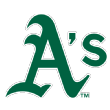 23. Oakland A's
23. Oakland A's
2016 rank: 18
There’s a lot of pitching coming in Oakland, and while it’s probably all more than a year out, that at least provides a glimmer of promise for A’s fans staring at a below-average roster and the team’s impending expulsion from the Revenue Sharing Country Club. This is never going to be a franchise that spends big to acquire major-league pitching via free agency.
The system as a whole, however, lacks high-ceiling or high-impact prospects. Their first-round picks from 2010, 2012 and 2013 have all been traded, and their limited forays into the deep end of the international free-agent market haven’t panned out. They did sign three players to million-dollar bonuses in the international July 2 class in 2016, and the early returns on their draft from last year are also positive. So there is at least an upward trend here.
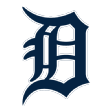 24. Detroit Tigers
24. Detroit Tigers
2016 rank: 26
The Tigers do love them some hard throwers, so that’s the obvious strength of the system, with 2016 first-round pick Matt Manning -- who’s consistently throwing up to 98 mph as a starter -- standing as the exemplar of a "Top Tigers Prospect."
While there are plenty of future relievers to be found here (led by potential closer Joe Jimenez), there’s a quiet underclass of prospects who project to play in the middle of the field and provide real defensive value, with the primary questions around their bats rather than their gloves or positions. That said, too many recent Tiger draft picks have had disappointing starts to their pro careers, even still-promising prospects like Beau Burrows, Derek Hill and Spencer Turnbull. If that group continues to stagnate, this system will end up in the bottom three next winter.
2016 rank: 27
The Orioles’ system has been down for a while now, hurt largely by the lack of progress and health issues affecting their best pitching prospects. But their 2016 draft class might finally give the organization the starting pitching hope they’ve needed for a while.
The long-term outlook here is much better than the short term, but the short term is where the probability and the trade value lies -- and that’s where Baltimore is lacking, with only catcher Chance Sisco and lefty Chris Lee both close to the majors and bringing high enough floors that they could return a significant big-league piece in a deal. What’s still lacking is up-the-middle talent, with Sisco their only top 15 prospect who is going to stay at any of those four positions.
2016 rank: 23
Of all of the systems down here on the bottom rung, none has the untapped upside of the Royals’ organization, with more guys whose scouting reports start with “if…” than any other.
If Kyle Zimmer is healthy after thoracic outlet syndrome surgery, he has top-of-the-rotation stuff and control.
If any of their four high-upside high school arms from the past two drafts takes a step forward, they’re all potential No. 3s in the rotation or better.
If Josh Staumont gains another grade of command on top of the gains he’s already made … if Garrett Davila’s projection pans out … if Marten Gasparini shows any patience … and so on.
The Royals swing for the fences in the draft and internationally, and after years of hitting on a good percentage of those guys, they’ve hit a dry spell. There’s still reason for optimism here if you’re a Royals fan (and aren’t still on cloud nine from their 2015 season), but they could use a system-wide hit of good fortune this year.
2016 rank: 30
They’ll be popping champagne bottles in Anaheim, as the Angels’ worst-ever farm system from last year is no longer No. 30 … but they still have a long way to go toward respectability, with so many prospects and even fringy guys traded to bolster the major-league club, most recently in the successful deal for Andrelton Simmons.
Their 2015 first-rounder Taylor Ward has been a disaster so far, but their second-rounder from that year, Jahmai Jones, has emerged as the team’s best prospect, and their 2016 crop looks like their most promising draft since at least 2010, which produced Kole Calhoun and Cam Bedrosian. Missing on big-dollar Cuban infielder Roberto Baldoquin also set them back by knocking them out of the international market for the past two cycles. While it’s easy to assume any nascent prospects will be fodder for GM Billy Eppler to deal, the Angels really need to develop some of their own starting pitching to prop up the big-league rotation.
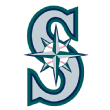 28. Seattle Mariners
28. Seattle Mariners
2016 rank: 28
Jerry Dipoto has made it very clear that his goal is to win now, having traded three of the team’s top dozen prospects already this offseason, including last week’s trade of Luiz Gohara (who was No. 2 on my Mariners list at the time) in a deal that eventually resulted in them acquiring Drew Smyly.
Years of poor drafts have caught up with the Mariners’ system, with $14 million spent on three top-three picks -- Dustin Ackley, Mike Zunino and Danny Hultzen -- who returned no value at all, and only one big leaguer from their second-round picks from 2007 to 2014. Their last first-round pick to reach 10 WAR (career) is 2003’s Adam Jones, who was traded to Baltimore in the Erik Bedard deal. Dipoto’s strategy to go all-in right now, having inherited an above-average major league team, makes a lot of sense, but if it doesn’t work there’s going to be a long, cold winter in Seattle.
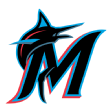 29. Miami Marlins
29. Miami Marlins
2016 rank: 29
The Marlins landed command lefty Braxton Garrett with their first pick in the 2016 draft, a departure from their history of taking big, hard-throwing, unpolished prep arms. He immediately became their best prospect after several years of high picks who haven’t panned out.
They’ve already traded their first-rounders from 2012, 2013 and 2015. Their 2014 first-rounder is out after Tommy John surgery, and they have only had one pick after the first round produce even 5 WAR on his career since 2007’s draft produced two. They also don’t spend much internationally, with their top three Latin American prospects right now including one acquired in trade and two who signed for a total of $350,000. The Marlins will probably never run huge payrolls under their current ownership, so they are going to have to introduce more young talent to the farm system than they have during the past five years.
2016 rank: 24
Dave Stewart ritually disemboweled a solid farm system in just two years at the helm of the Diamondbacks. Stewart has better things to do now, and the challenge for new GM Mike Hazen & Co. is substantial. Arizona did not draft well under Stewart. The best player they took in those two drafts is now the starting shortstop in Atlanta, and I don’t think anyone else from either class would make my global top 150 prospects list.
They blew their international signing budget in 2015 on Yoan Lopez, now a non-prospect, and that precluded them from participating in any meaningful way in the strong 2016 international class. They traded two top 100 prospects plus a third who didn’t miss the top 100 by much in moves that made the club worse off in the long run. This system is several drafts away from getting back into the middle of the pack, and unless they’re willing to trade their superstar first baseman, I don’t think they have a shortcut available.

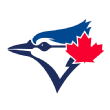 21.
21. 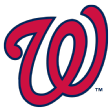 22.
22. 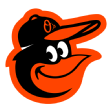 25.
25. 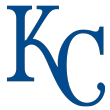 26.
26. 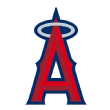 27.
27. 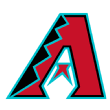 30.
30.